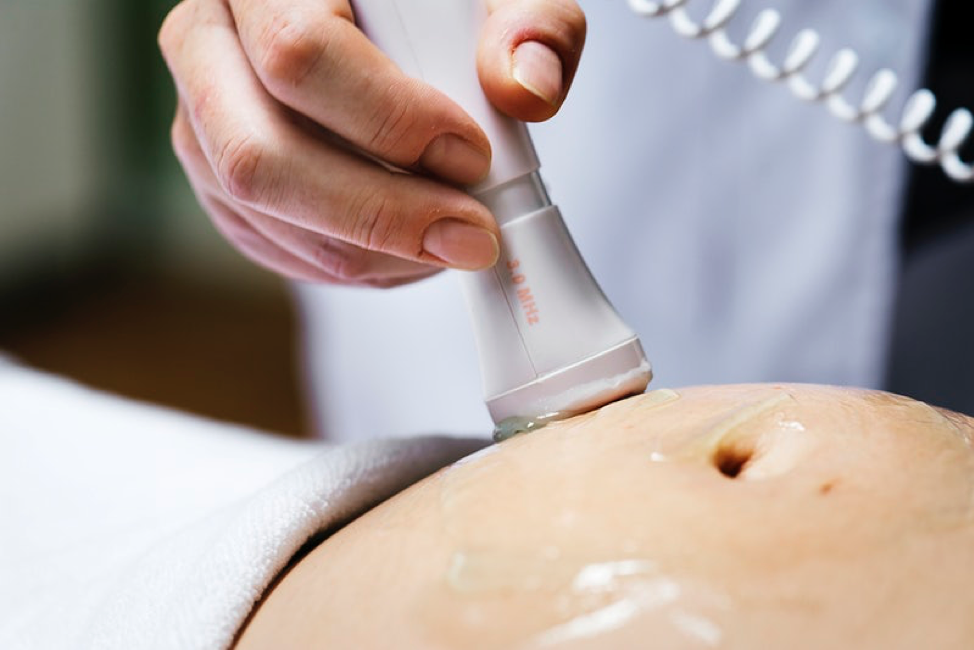Venous ultrasound produces images of the veins in your body with the help of sound waves. Usually, a doctor uses it to search for blood clots, especially in the veins of the leg. If there are blood clots, the condition is referred to as deep vein thrombosis. Ultrasound has no recognized damaging effects because it does not use ionizing radiation.
Occasionally, your doctor might ask you not to drink or eat anything. You can only have water six to eight hours before surgery. In some cases, you may not require any particular preparation for this procedure. Do not carry any jewelry with you; wear loose and comfortable clothes. You might have to wear a gown before going for surgery.

(Source)
Ultrasound is painless and safe. Ultrasound imaging is also known as sonography or ultrasound scanning. Ultrasound examinations do not utilize radiation, whereas x-rays do. Because ultrasound captures images in real-time, it can show the movement and structure of your body’s inner organs. Ultrasound can also demonstrate the flow of blood in vessels.
The Procedure of Venous Ultrasound
Venous Ultrasound is also known as a lower extremity duplex scan. A lower extremity duplex scan is a combination of Doppler and sonography. This scan is a noninvasive and precise test that allows doctors to detect venous thrombosis (clots of blood in the veins of your leg), or damaged valves on the surface of the veins that can cause varicose veins. You can always rely on us to perform the procedure in the most reliable manner. Our doctors are licensed and experienced to perform these procedures with the utmost accuracy every time. Take a look at some of the treatments we offer at our clinic.
As stated above, doctors perform ultrasound by using a transducer and place it over the lower extremity. They apply a clear warm gel on a particular body part and move the transducer across the area to visualize the internal images. Usually, they do it with the patient in the supine position, but they can also perform it while the patient is standing. However, the standing position will allow you to have the most precise evaluation of a defective valve in the vein. The images will appear on the screen in real-time so that you and your doctor can review them together.

(Source)
What Are the Common Uses of This Procedure?
Surgeons commonly use venous ultrasound procedures to detect blood clots, particularly in the veins of your legs. Hence, whether the doctor chooses this method or some other often depends upon the condition of DVT or vein thrombosis. Unfortunately, the clots in the veins of your legs can pass into the lungs, causing a dangerous disease called pulmonary embolism. If you find blood clots in your leg at an early stage and start your treatment, you can prevent it from transferring to the lung.
Moreover, the following are some more uses of a venous ultrasound study;
- Determine the cause of long-standing swelling in your leg. Many people have a common condition called “varicose veins.” Normally, the valves in the veins that regulate the flow of blood may be damaged. A venous ultrasound can help you identify the unusual blood flow and defective valves.
- Aid in directing the placement of a catheter or needle into a vein. Through Sonography, a doctor can locate the accurate area of the vein and avoid damage to nerves and nearby arteries.
- Identify the veins in your leg or arm so that doctor can remove the pieces of the vein and use it to block blood vessels or bypass a narrowed vessel.
- Inspect a blood vessel graft used for dialysis to know whether the blood vessel is working accurately or not.
Doppler Ultrasound
Doppler ultrasound is a unique ultrasound technique; doctors can us this technique to evaluate the movements of unwanted substances in your body. Doppler ultrasound also allows your doctor to see and examine blood flow through veins and arteries in your body. A physician can use Doppler ultrasound for a variety of conditions. Some of these conditions are as under.
- Obstructions in blood flow
- Thinning of vessels
- Congenital vascular and tumor malformations
- Absent or reduced blood flow to different organs of the body
- Blood flow is more significant than before, which might be a symbol of an infection
Consult NYC Vascular Surgeon Norman Chideckel MD for all Vascular Conditions
Even the most harmless conditions can sometimes indicate a serious problem. Not paying attention on time can result in irrevocable damages. You have to make sure that you consult a specialist before your situation shifts to the worse side.
When you need help, you can always call us at 212-993-6133 to book an appointment. Meet Dr. Chideckel to discuss your options and find the best treatment to your problem. You can also book your appointment online.


